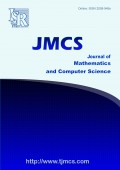The Biennial Malmquist Index in the of Negative Data
-
2456
Downloads
-
3493
Views
Authors
Narjes Mohammadi
- Science and Research branch, Islamic Azad university, Mazandaran, Iran.
Alireza Yousefpour
- Department of IT & Computer, Islamic Azad University of Qaemshahr branch, Iran.
Abstract
We purpose the range directional model (RDM), a particular case of the directional distance function, is used for computing efficiency in the presence of negative data. We use RDM efficiency measures to arrive at a Malmquist-type index which can reflect productivity change.
We illustrate how the biennial Malmquist index can be used, not only for comparing the performance of a unit in two time periods, but also for comparing the performance of two different units at the same or different time periods. The proposed approach is then applied to a sample of bank branches where negative data were involved. In this paper, we introduce a biennial Malmquist index of productivity change that can be used with negative data.
Share and Cite
ISRP Style
Narjes Mohammadi, Alireza Yousefpour, The Biennial Malmquist Index in the of Negative Data, Journal of Mathematics and Computer Science, 12 (2014), no. 1, 1 - 11
AMA Style
Mohammadi Narjes, Yousefpour Alireza, The Biennial Malmquist Index in the of Negative Data. J Math Comput SCI-JM. (2014); 12(1):1 - 11
Chicago/Turabian Style
Mohammadi, Narjes, Yousefpour, Alireza. "The Biennial Malmquist Index in the of Negative Data." Journal of Mathematics and Computer Science, 12, no. 1 (2014): 1 - 11
Keywords
- biennial Malmquist index
- negative data
MSC
References
-
[1]
DW. Caves, LR. Christensen, WE. Diewert, The economic theory of index numbers and the measurement of inputs, outputs and productivity, , (1982)
-
[2]
R. G. Chambers, Y. Chung, R. Fare, Benefit and distance functions, , 407-419 (1996)
-
[3]
R. G. Chambers, Y. Chung, R. Fare, Profit, directional distance functions, and Nerlovian efficiency , , (1998)
-
[4]
R. Färe, S. Grosskopf, M. Norris, Z. Zhang , Productivity growth, technical progress, and efficiency change in industrialized countries, , 66-83 (1994)
-
[5]
R. Fare, S. Grosskopf, F. Hernadez-Sancho , Environmental performance: An index number approach, Resource and Energy Economics , 26 (2004), 343–352
-
[6]
M. Nishimizu, J. M. Page, Total factor productivity growth, technological progress and efficiency change , , 920-936 (1982)
-
[7]
K. H. Park, W. L. Weber , A note on efficiency and productivity growth in the Korean banking industry, 1992–2002, Journal of Banking and Finance , 30 (2006), 2371–2386
-
[8]
J. T. Pastor, C. A. K. Lovell, A global Malmquist productivity index , Economics Letters 88, 266– 271 (2005)
-
[9]
J. T. Pastor, C. A. K. Lovell , the biennial Malmquist productivity change index, , 10-15 (2011)
-
[10]
M. C. A. S. Portela, E. Thanassoulis, G. P. M. Simpson, Negative data in DEA: A directional distance approach applied to bank branches, Journal of the Operational Research Society , 55 (2004), 1111–1121
-
[11]
M. C. A. S. Portela, E. Thanassoulis, Comparative efficiency analysis of Portuguese bank branches , European Journal of Operational Research , 177 (2007), 1275–1288
-
[12]
M. C. A. S. Portela, E. Thanassoulis, A circular Malmquist-type index for measuring productivity, AstonWorking Paper RP08-02., Aston University Birmingham B4 7ET, U (2008)

